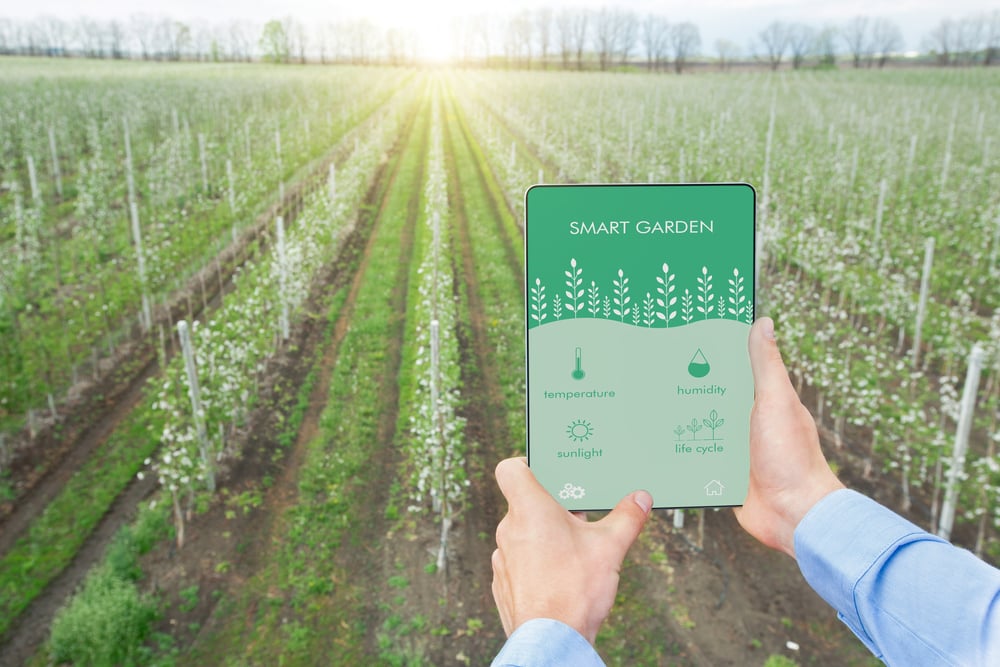In an era defined by technological integration, our homes are becoming smarter. From thermostats that learn our preferences to voice-activated assistants that manage our schedules, the digital revolution has left no stone unturned. Now, this wave of innovation is washing over our backyards, patios, and windowsills, fundamentally transforming the ancient art of gardening. Smart gardening technology is no longer a fringe concept for tech enthusiasts; it is a mainstream movement empowering a new generation of plant lovers to cultivate lush, thriving gardens with unprecedented ease and efficiency. This comprehensive guide delves into the cutting-edge innovations that are reshaping home horticulture, making it more accessible, sustainable, and successful than ever before.
The Foundation: What is Smart Gardening?
At its core, smart gardening is the integration of technology—often Internet of Things (IoT) enabled—into the practice of cultivating plants. It leverages sensors, automation, data analytics, and connectivity to monitor, manage, and optimize the growing environment. The goal is twofold: to remove the guesswork from gardening, thereby ensuring plant health, and to conserve vital resources like water and energy. This approach is perfect for everyone, from the busy urbanite with a single houseplant to the dedicated homeowner with a sprawling vegetable patch.
The Driving Forces Behind the Smart Garden Boom
The rapid adoption of smart gardening tech isn’t happening in a vacuum. Several key societal trends are fueling its growth:
A. The Urbanization Shift: As more people move into cities and apartments, space becomes a premium. Smart gardening solutions like indoor smart gardens and vertical farming units allow for fresh produce and greenery in compact living situations.
B. The Sustainability Imperative: With growing concerns over water scarcity and climate change, consumers are actively seeking ways to reduce their environmental footprint. Smart irrigation systems that drastically cut water waste directly address this concern.
C. The Wellness and Self-Sufficiency Movement: The COVID-19 pandemic ignited a passion for home cooking, food security, and the mental health benefits of nurturing plants. Smart tech lowers the barrier to entry, helping novices succeed and reap these rewards.
D. The Ubiquity of Smart Homes: As households adopt ecosystems like Google Home and Amazon Alexa, there is a natural desire to extend this convenience to all aspects of home management, including the garden.
A Deep Dive into Key Smart Gardening Innovations
The market is brimming with ingenious devices designed to tackle every aspect of plant care. Let’s explore the categories leading this green revolution.
A. Intelligent Irrigation Systems: The End of Water Waste
Arguably the most impactful category, smart irrigation systems ensure plants get exactly the amount of water they need, precisely when they need it.
-
Smart Controllers: These devices replace your traditional sprinkler timer. They connect to your home’s Wi-Fi and use local weather data, historical patterns, and hyperlocal forecasts to automatically adjust watering schedules. If it’s going to rain tomorrow, the system will skip a cycle. They can be controlled and monitored via a smartphone app from anywhere in the world.
-
Soil Moisture Sensors: Taking precision a step further, these probes are placed directly in the soil. They measure the actual moisture content at the root level and override the smart controller’s schedule if the soil is already sufficiently wet or unusually dry. This is the ultimate in water conservation.
-
Drip Irrigation Integration: Many smart systems are designed to work with highly efficient drip irrigation lines, which deliver water slowly and directly to the base of each plant, minimizing evaporation and runoff.
B. Connected Soil Sensors: The Plant’s Voice
These compact, often solar-powered devices are the heart of a data-driven garden. Inserted into the soil, they act as a continuous monitoring system, providing real-time insights into the plant’s underground world.
-
Parameters Measured: Advanced sensors track a suite of critical data points far beyond just moisture. They can measure soil pH levels, light intensity (in lux or foot-candles), ambient temperature, and humidity. Some premium models even analyze soil nutrient levels (NPK – Nitrogen, Phosphorus, Potassium).
-
Actionable Alerts: The true power lies in the app. Instead of wondering if your plant is thirsty, the sensor will send a direct notification to your phone: “Your tomato plant’s soil moisture is low,” or “The pH level in your rose bed is becoming too acidic.” This transforms reactive, often too-late care into proactive, preventative plant healthcare.
C. Automated Indoor Smart Gardens: Fresh Herbs, Year-Round
For those with limited space or no outdoor area, countertop smart gardens have become a phenomenon. These all-in-one appliances are designed for effortless indoor growing.
-
How They Work: They typically use a hydroponic or aeroponic system, where plants grow in water infused with nutrients, not soil. Built-in, energy-efficient LED grow lights provide the perfect spectrum and duration of light for photosynthesis. The systems are fully automated, with pumps circulating water and lights turning on and off automatically.
-
The Experience: Users simply insert pre-seeded pods (available for herbs like basil and mint, leafy greens like lettuce, and even flowers), add water, and plug it in. The device does the rest. It’s a foolproof way to have a constant supply of ultra-fresh, pesticide-free greens right in your kitchen.
D. Robotic Lawn Mowers: The Autonomous Groundskeeper
Following in the footsteps of the robotic vacuum cleaner, these devices have revolutionized lawn care. They are designed to operate autonomously, keeping grass at a perfectly manicured length without any human intervention.
-
Operation: A perimeter wire is installed around the lawn’s edge, which acts as an invisible fence. The robot mower uses this wire to navigate its territory. It quietly trims the grass a little bit every day or as scheduled, mulching the fine clippings back into the lawn as natural fertilizer.
-
Benefits: They save a significant amount of time, eliminate the noise and emissions of gas-powered mowers, and promote a healthier lawn through continuous, gentle cutting and natural fertilization.
E. Plant Care and Identification Apps: A Botanist in Your Pocket
While not a physical tool, smartphone applications are a crucial component of the smart gardening ecosystem. Their capabilities are astounding.
-
Image Recognition: Apps like PictureThis or Planta allow you to take a photo of any plant, and their vast databases will instantly identify it. This is incredibly useful for learning about unknown plants in your garden or diagnosing issues.
-
Care Guides and Reminders: Once a plant is identified, the app provides detailed care guides. You can input your plants into a digital collection, and the app will send you customized reminders for watering, fertilizing, and repotting based on the specific needs of each species.
-
Community and Expert Advice: Many apps feature large communities of gardeners and access to professional botanists, allowing you to crowdsource advice and get help diagnosing tricky plant diseases.
The Tangible Benefits: Why Make the Switch?
Adopting smart gardening technology offers a multitude of advantages that extend far beyond simple convenience.
A. Unprecedented Water Conservation: This is the single biggest environmental benefit. Smart irrigation systems can reduce outdoor water usage by up to 50% compared to traditional methods, a critical savings in drought-prone regions.
B. Higher Success Rates and Yields: By providing optimal growing conditions 24/7, these technologies drastically reduce plant stress from under-watering, over-watering, or lack of light. This leads to healthier plants, more abundant blooms, and significantly larger harvests of fruits and vegetables.
C. Significant Time Savings and Convenience: Automation handles the mundane, repetitive tasks. Vacation? No need to ask a neighbor to water your plants. A busy week at work? The garden continues to thrive on its own.
D. Valuable Data-Driven Learning: For those looking to deepen their gardening knowledge, these tools provide a wealth of data. You learn precisely how different plants respond to their environment, turning gardening from an art into a data-informed science.
E. Enhanced Accessibility: Smart gardening opens the hobby to individuals with physical limitations that make traditional gardening challenging, as well as to complete beginners who lack confidence.
Navigating the Challenges and Considerations
While the future is bright, it’s important to approach smart gardening with a clear-eyed view.
A. The Initial Investment: The upfront cost of these devices is higher than their traditional counterparts. A quality smart irrigation controller or a robotic mower represents a significant investment, though the long-term savings in water bills and time can offset it.
B. The Tech Learning Curve: Setting up and syncing devices to a Wi-Fi network and a central app can be daunting for the less tech-savvy. A stable internet connection is a prerequisite for full functionality.
C. Data Privacy and Security: As with any IoT device, it’s crucial to purchase from reputable brands that prioritize security and are transparent about how they use any collected data.
D. The “Set and Forget” Trap: Technology is an aid, not a replacement for a gardener’s intuition and observation. It’s still vital to periodically visually inspect plants for pests or diseases that sensors might not detect.
The Future of Smart Gardening: What’s on the Horizon?
The innovation in this field is accelerating. Future developments we can expect to see include:
-
Advanced AI Integration: Systems that don’t just report data but learn from it. Imagine an AI that analyzes years of your garden’s performance and automatically adjusts conditions to perfect your harvest.
-
More Sophisticated Robotics: Beyond mowing, we may see robots capable of weeding, pruning, and even harvesting specific crops like strawberries or tomatoes.
-
Broader Ecosystem Integration: Your smart garden will seamlessly communicate with other home systems. Your security lights could adjust their spectrum to aid plant growth, or your smart home hub could suggest recipes based on what’s ready to harvest in your garden.
-
Widespread Renewable Energy Use: An increased focus on solar-powered sensors and robots, making the entire gardening process even more sustainable.
Conclusion: Cultivating a Smarter, Greener Future
Smart gardening technology represents a powerful synergy between nature and human ingenuity. It is not about replacing the joy of getting your hands dirty but about enhancing it by removing the frustrations of failure and waste. By harnessing data, automation, and connectivity, these innovations are democratizing gardening, promoting incredible environmental stewardship, and empowering us to grow our own food and beautiful spaces with confidence. Whether you start with a simple soil sensor or a full-blown automated system, embracing smart gardening is a fruitful step toward a more sustainable and fulfilling hobby.














